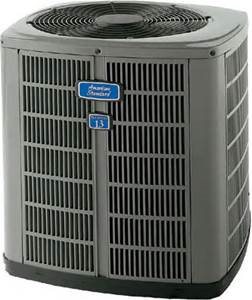There has been much talk in the last several months about the 50 plus tax provisions that expired at the end of 2013. (Be sure and follow my General Accounting blog on this site for more news on the extenders!) Of all these recently expired provisions, the one that probably affects the most businesses is the deduction for bonus depreciation.
There is no doubt bonus depreciation is a valuable deduction and most of us think it would be a good idea to make it permanent. For one thing, it is certainly easier to expense property immediately than to deal with depreciating it over time. However, bonus depreciation was not originally implemented to make it easier for taxpayers to handle their fixed assets but rather it was intended to give a boost to the economy. By providing such a generous tax deduction, more businesses are likely to purchase more fixed assets and, therefore, stimulate the economy.
Let’s take a moment and briefly consider its history: bonus depreciation first became available for qualifying property acquired after September 10, 2001. It was in place for three years through 2004, allowed to expire, and then brought back in 2008. It has gone from being a 30% deduction to a 50% deduction to a 100% expensing, and, finally, back to 50% before it expired at the end of 2013.
Recent discussions on the deduction for bonus depreciation have ranged from extending it for one year, to making it permanent, to letting it lapse completely. And, while bonus depreciation has a long history of being extended, some think extending bonus once again will actually reduce its effectiveness as an economic stimulant. Think about it: when it was a comparatively new deduction, no one knew for how long it would be available, thus causing many businesses to move up their future purchases of fixed assets. But every time bonus depreciation gets extended, some think it might eventually be made permanent, which, of course, means the loss of any sense of urgency to increase purchases.
Other recent news of interest for fixed assets management includes the following:
-
 IRS has announced that, with very limited exceptions, the proper asset class for depreciation of tangible assets used in converting corn to fuel grade ethanol is asset class 49.5, Waste Reduction and Resource Recovery Plants. Assets in class 49.5 have a recovery period of 7 years for purposes of the general depreciation system and 10 years for purposes of the alternative depreciation system. (Revenue Ruling 2014-17)
IRS has announced that, with very limited exceptions, the proper asset class for depreciation of tangible assets used in converting corn to fuel grade ethanol is asset class 49.5, Waste Reduction and Resource Recovery Plants. Assets in class 49.5 have a recovery period of 7 years for purposes of the general depreciation system and 10 years for purposes of the alternative depreciation system. (Revenue Ruling 2014-17)
-
 In a recent private letter ruling, the IRS determined not all drywall is the same and, therefore, different types may qualify for different recovery periods. They concluded that a “zip” drywall system can be more easily removed and reused than a conventional drywall system. Therefore, zip drywall can be included in class 57.0, Distributive Trades and Services, making it eligible for a 5-year recovery period and double declining-balance depreciation. This is a huge improvement over the conventional type of drywall, which is considered to be nonresidential real property, and, therefore, must use straight-line depreciation over a 39-year recovery period. While this is a private letter ruling and, therefore, not binding on others, it should give real estate developers a much welcome tax break. Even though the zip drywall may be more costly, this could be a significant enough tax benefit to warrant the additional expense.
In a recent private letter ruling, the IRS determined not all drywall is the same and, therefore, different types may qualify for different recovery periods. They concluded that a “zip” drywall system can be more easily removed and reused than a conventional drywall system. Therefore, zip drywall can be included in class 57.0, Distributive Trades and Services, making it eligible for a 5-year recovery period and double declining-balance depreciation. This is a huge improvement over the conventional type of drywall, which is considered to be nonresidential real property, and, therefore, must use straight-line depreciation over a 39-year recovery period. While this is a private letter ruling and, therefore, not binding on others, it should give real estate developers a much welcome tax break. Even though the zip drywall may be more costly, this could be a significant enough tax benefit to warrant the additional expense.
-
 Congress has recommended making the increased limits of Section 179 expense permanent ($500,000 maximum expense with a $2M investment threshold). It has also been suggested that Section 179 expensing should be allowed on air conditioning and heating units as a way to encourage energy efficiency. This would be an interesting change!
Congress has recommended making the increased limits of Section 179 expense permanent ($500,000 maximum expense with a $2M investment threshold). It has also been suggested that Section 179 expensing should be allowed on air conditioning and heating units as a way to encourage energy efficiency. This would be an interesting change!
Fascinating Fixed Assets Fact: In a short tax year of less than 12 months, you do not have to prorate either the amount of Section 179 expense or the deduction for bonus depreciation.



